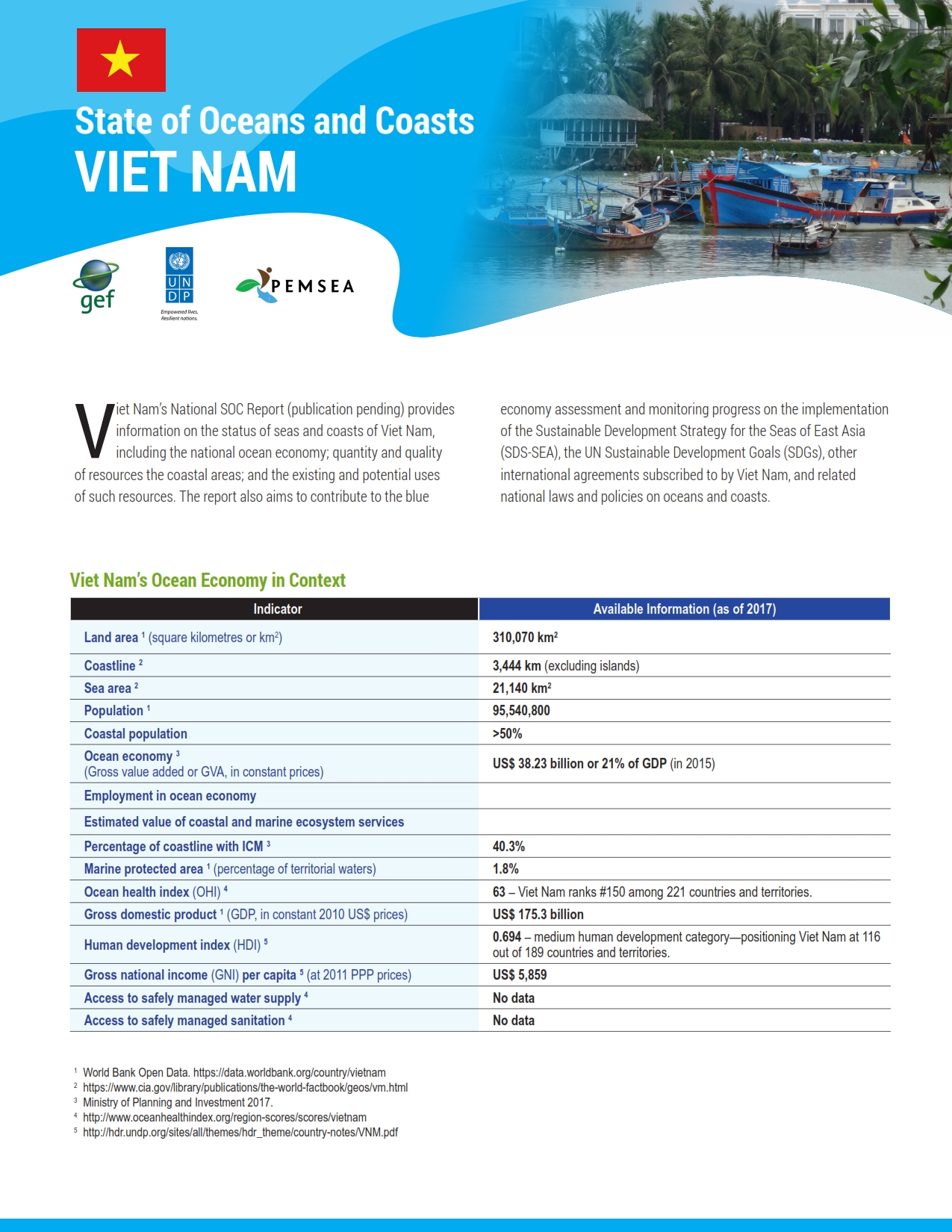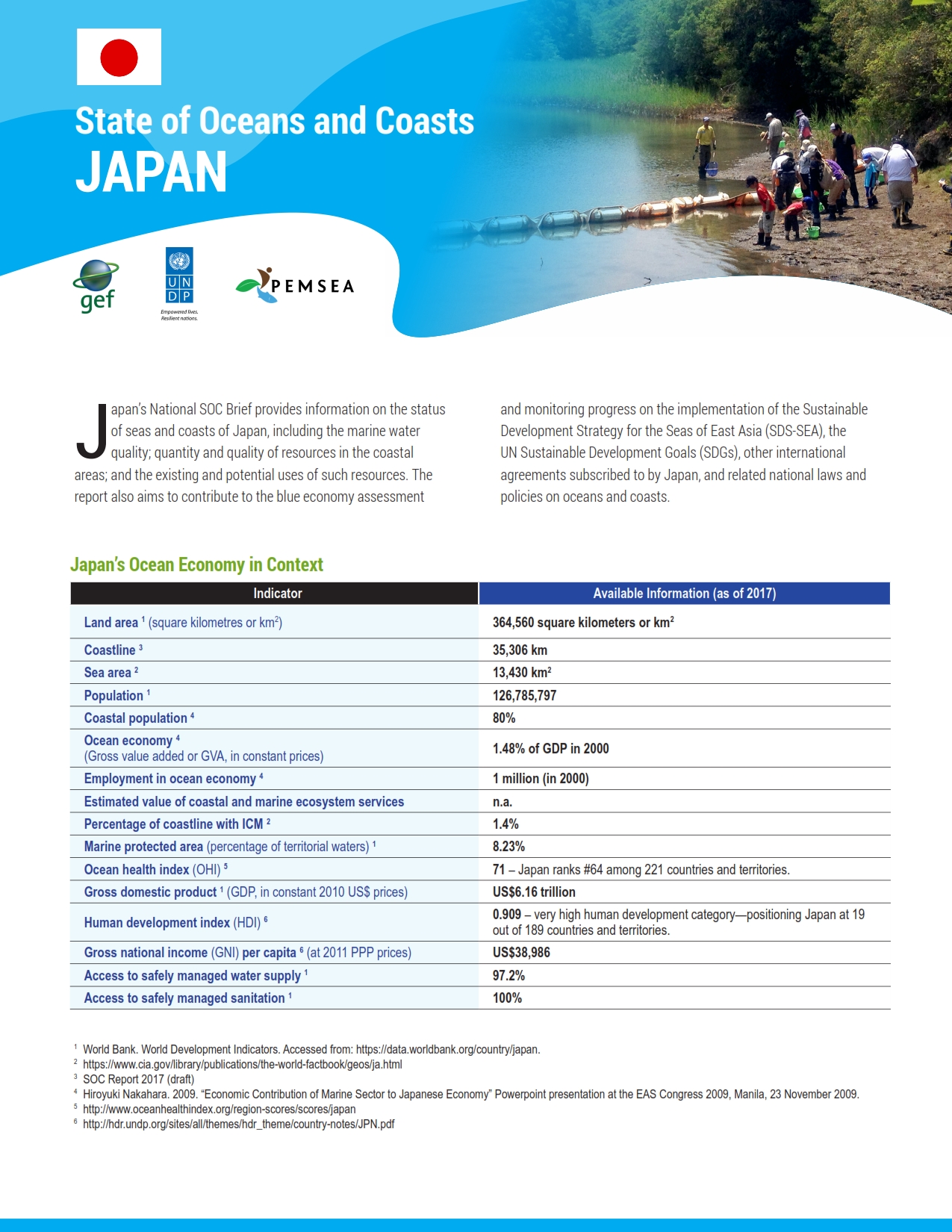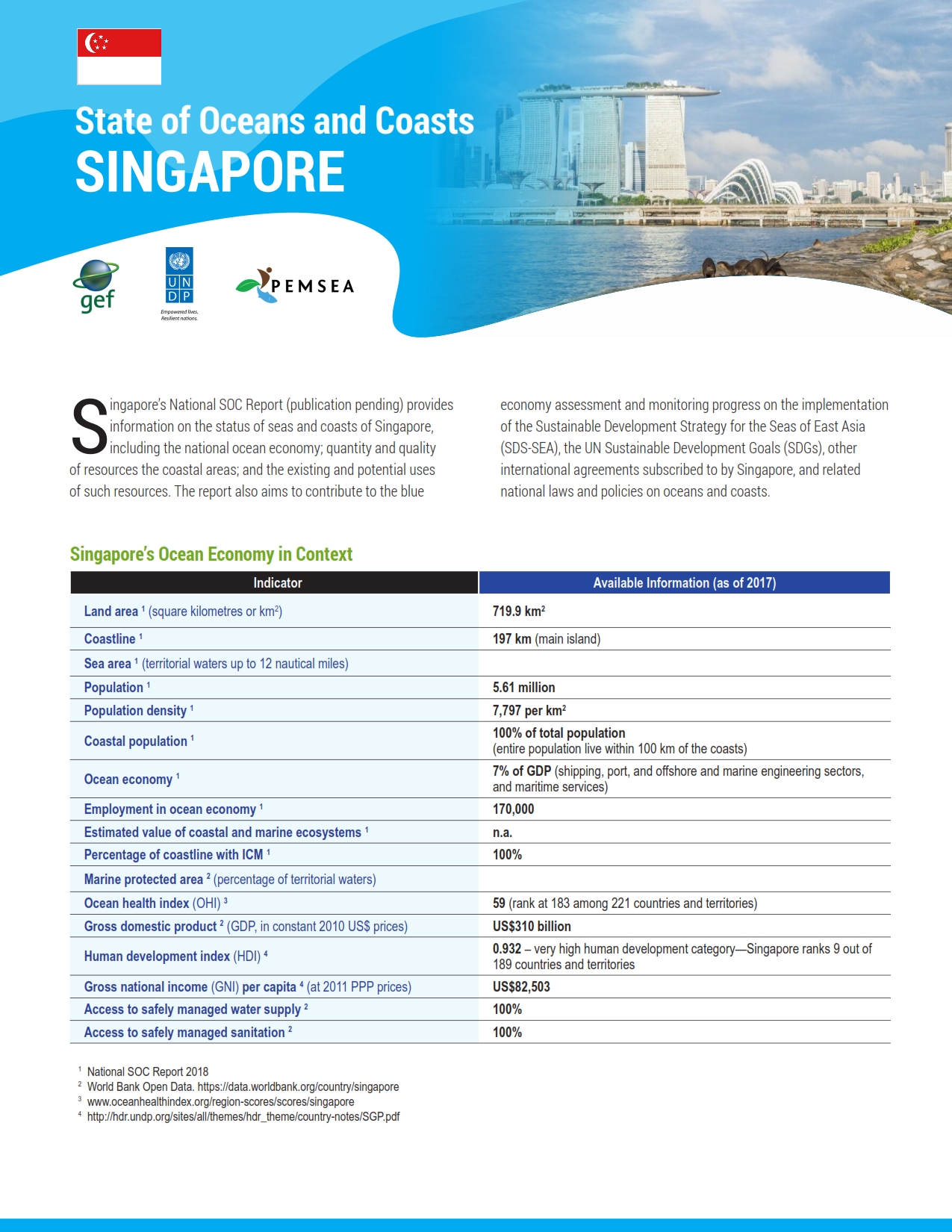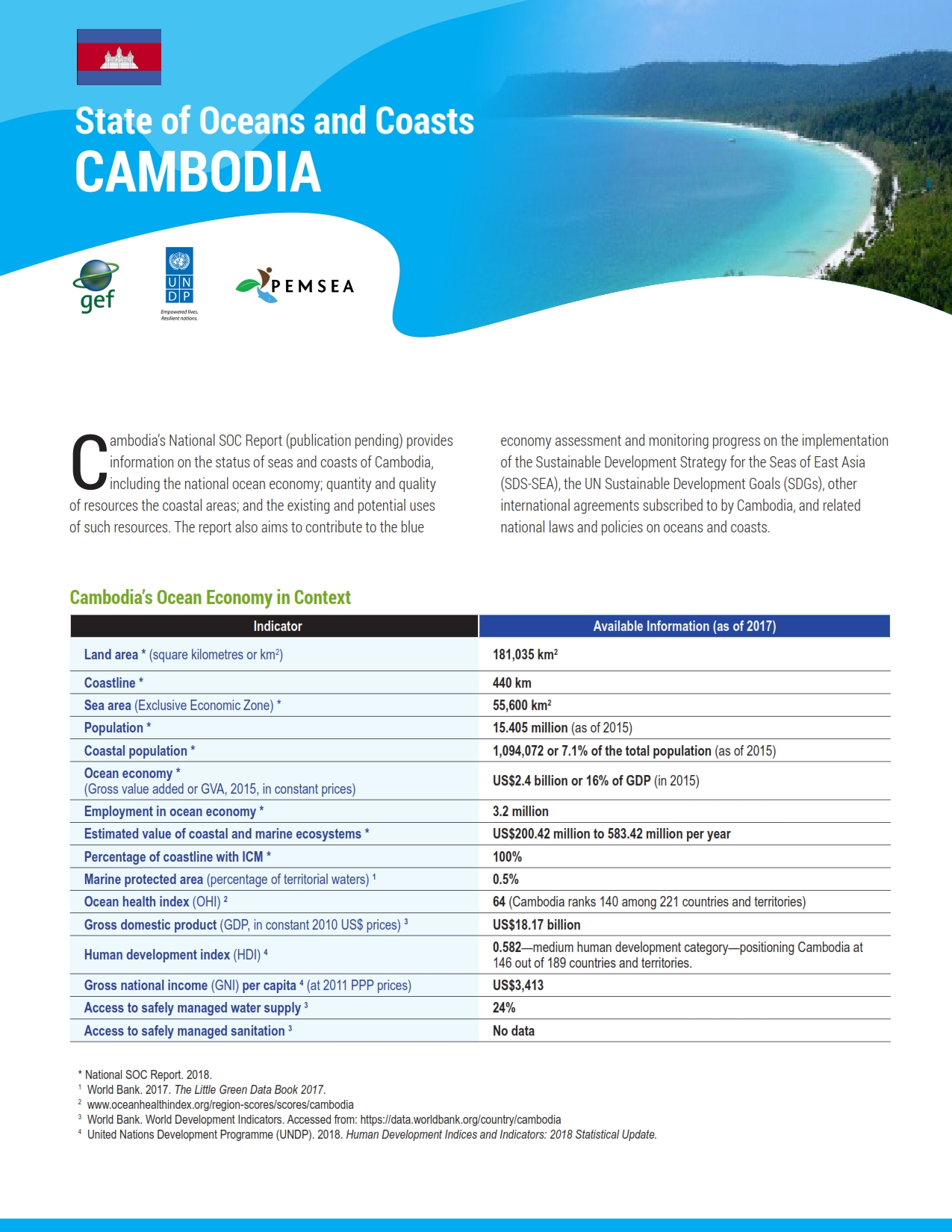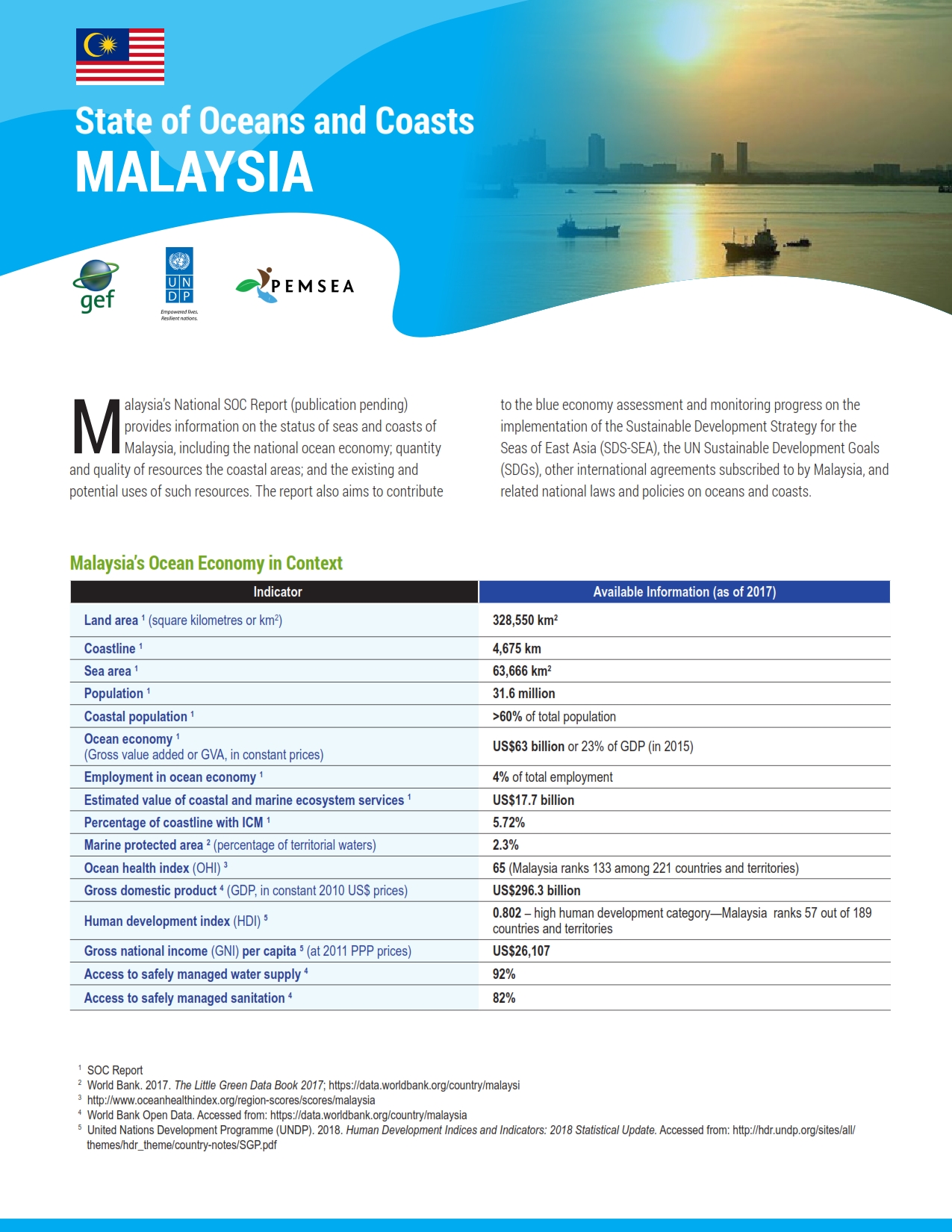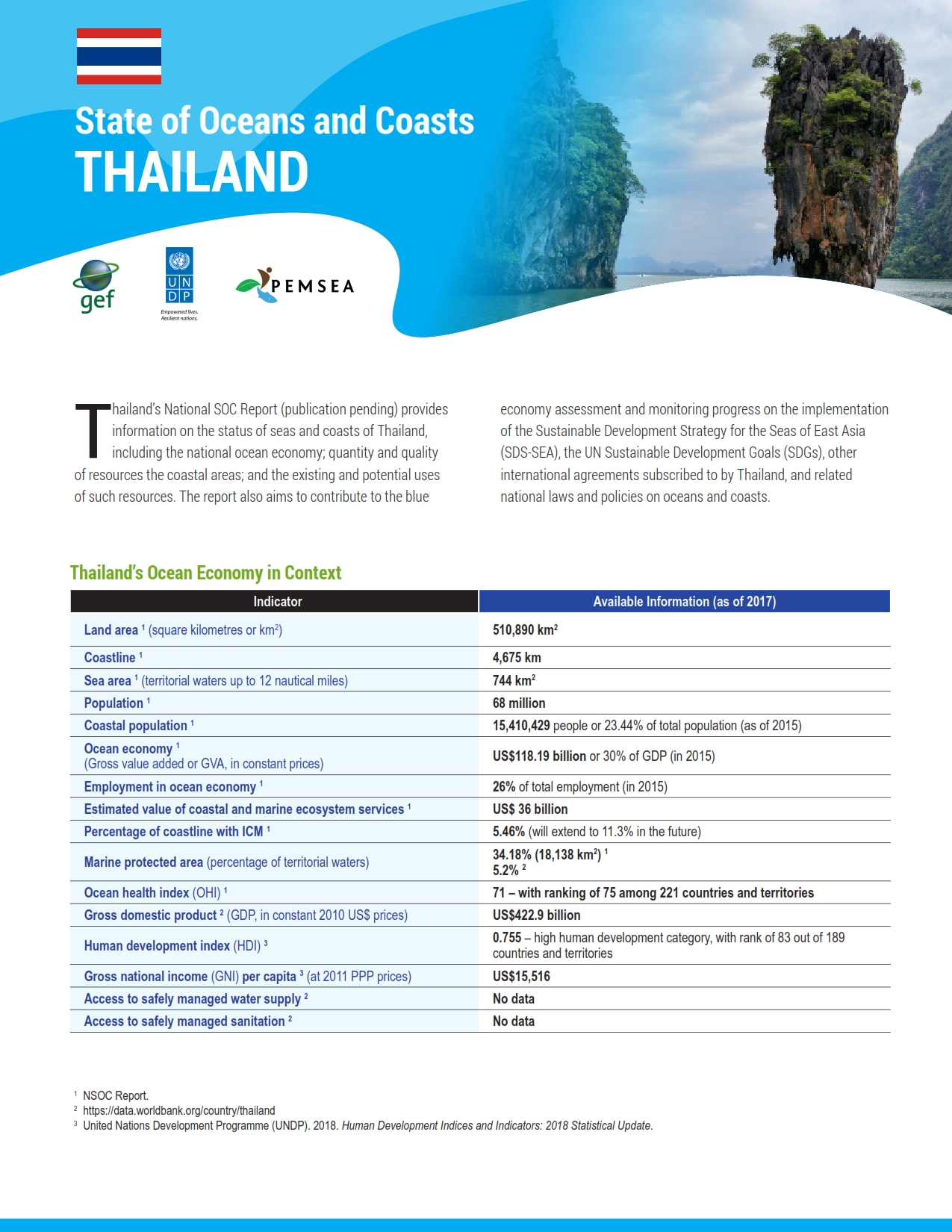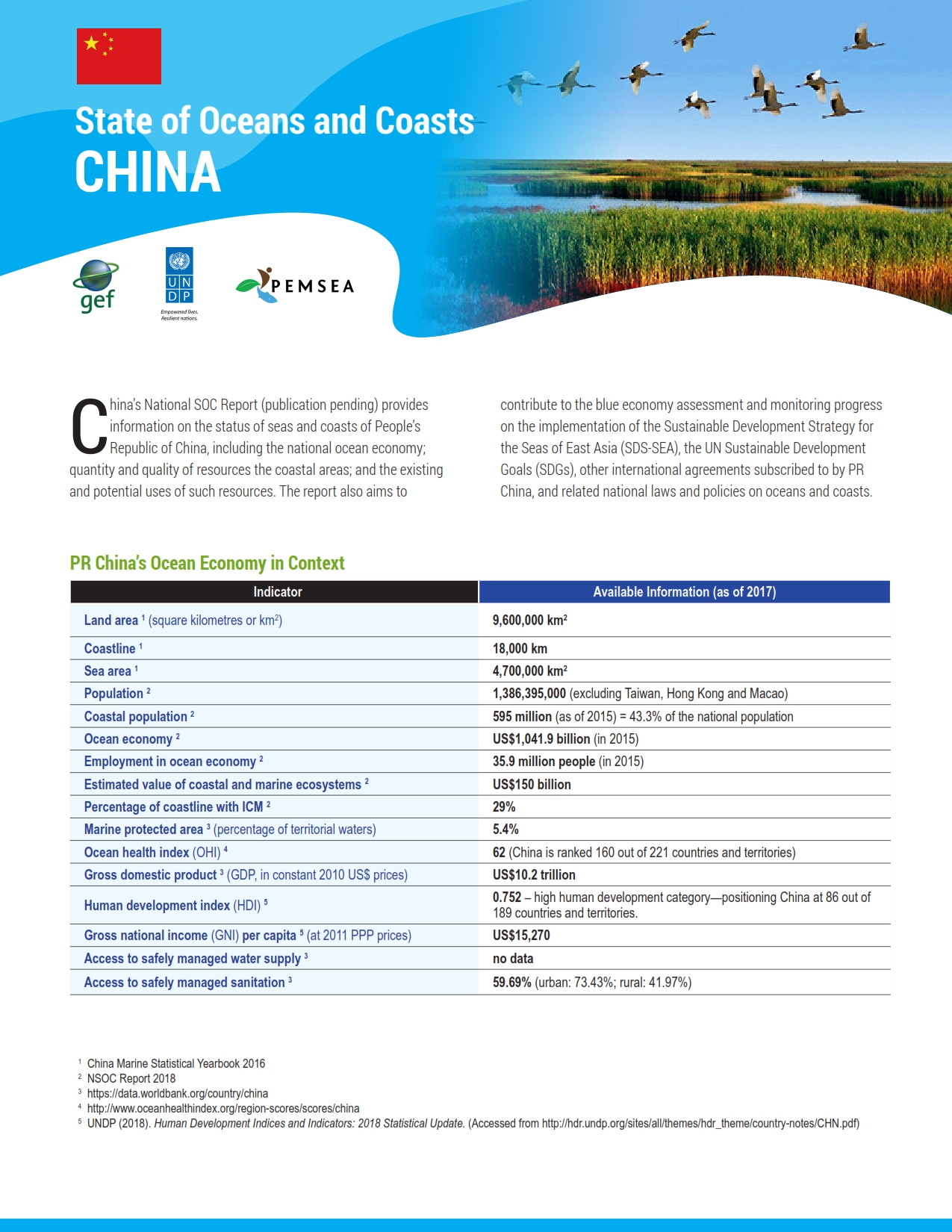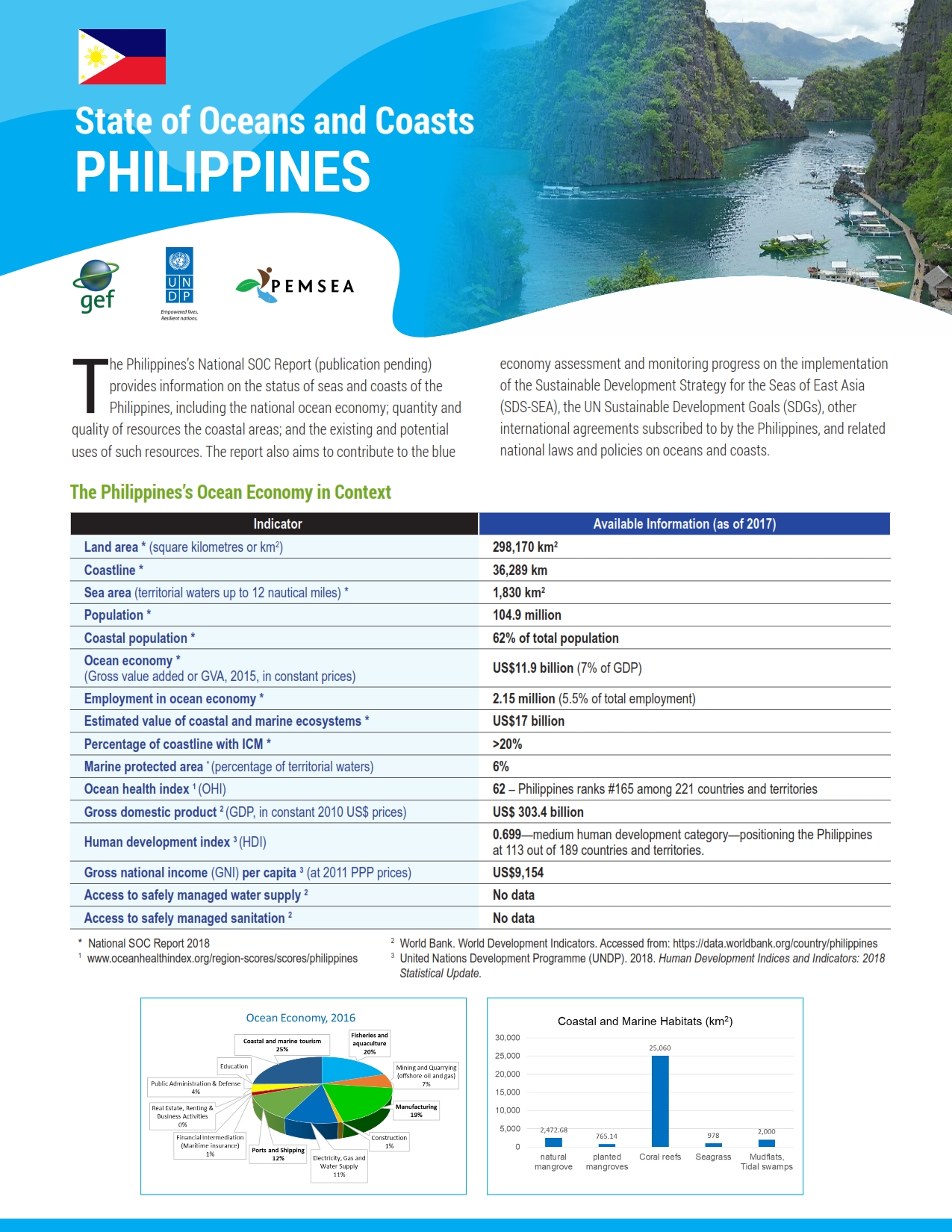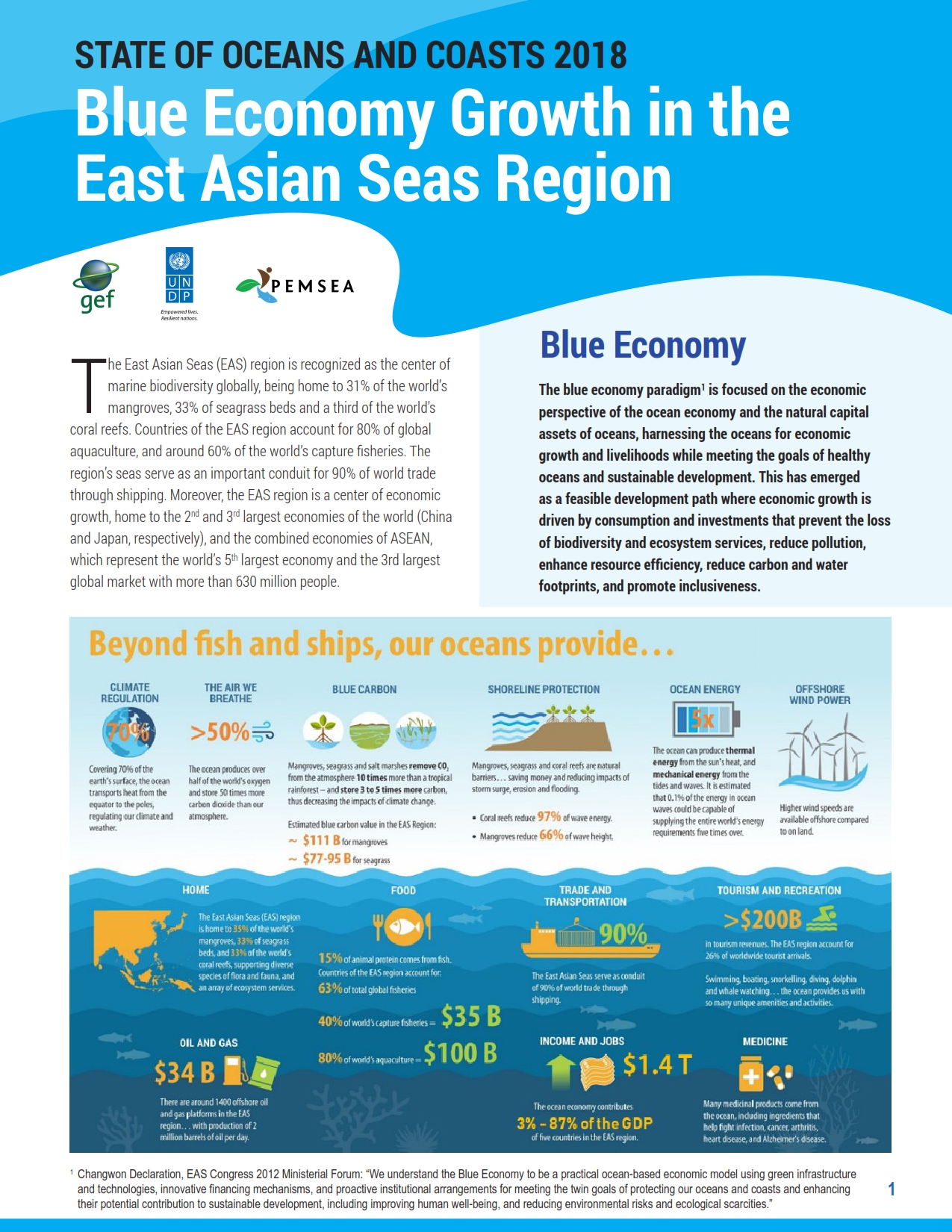
Breadcrumb
-
State of Oceans and Coasts of Viet Nam
Viet Nam’s National SOC Report provides information on the status of seas and coasts of Viet Nam, including the national ocean economy; quantity and quality of resources the coastal areas; and the existing and potential uses of such resources. The report also aims to contribute to the blue economy assessment and monitoring progress on the implementation of the Sustainable Development Strategy for the Seas of East Asia (SDS-SEA), the UN Sustainable Development Goals (SDGs), other international agreements subscribed to by Viet Nam, and related national laws and policies on oceans and coasts.
-
State of Oceans and Coasts of Japan
Japan’s National SOC Brief provides information on the status of seas and coasts of Japan, including the marine water quality; quantity and quality of resources in the coastal areas; and the existing and potential uses of such resources. The report also aims to contribute to the blue economy assessment and monitoring progress on the implementation of the Sustainable Development Strategy for the Seas of East Asia (SDS-SEA), the UN Sustainable Development Goals (SDGs), other international agreements subscribed to by Japan, and related national laws and policies on oceans and coasts.
-
State of Oceans and Coasts of Singapore
Singapore’s National SOC Report provides information on the status of seas and coasts of Singapore, including the national ocean economy; quantity and quality of resources the coastal areas; and the existing and potential uses of such resources. The report also aims to contribute to the blue economy assessment and monitoring progress on the implementation of the Sustainable Development Strategy for the Seas of East Asia (SDS-SEA), the UN Sustainable Development Goals (SDGs), other international agreements subscribed to by Singapore, and related national laws and policies on oceans and coasts.
-
State of Oceans and Coasts of Cambodia
Cambodia’s National SOC Report provides information on the status of seas and coasts of Cambodia, including the national ocean economy; quantity and quality of resources the coastal areas; and the existing and potential uses of such resources. The report also aims to contribute to the blue economy assessment and monitoring progress on the implementation of the Sustainable Development Strategy for the Seas of East Asia (SDS-SEA), the UN Sustainable Development Goals (SDGs), other international agreements subscribed to by Cambodia, and related national laws and policies on oceans and coasts.
-
State of Oceans and Coasts of Malaysia
Malaysia’s National SOC Report provides information on the status of seas and coasts of Malaysia, including the national ocean economy; quantity and quality of resources the coastal areas; and the existing and potential uses of such resources. The report also aims to contribute to the blue economy assessment and monitoring progress on the implementation of the Sustainable Development Strategy for the Seas of East Asia (SDS-SEA), the UN Sustainable Development Goals (SDGs), other international agreements subscribed to by Malaysia, and related national laws and policies on oceans and coasts.
-
State of Oceans and Coasts of Thailand
Thailand’s National SOC Report provides information on the status of seas and coasts of Singapore, including the national ocean economy; quantity and quality of resources the coastal areas; and the existing and potential uses of such resources. The report also aims to contribute to the blue economy assessment and monitoring progress on the implementation of the Sustainable Development Strategy for the Seas of East Asia (SDS-SEA), the UN Sustainable Development Goals (SDGs), other international agreements subscribed to by Thailand, and related national laws and policies on oceans and coasts.
-
State of Oceans and Coasts of China
China’s National SOC Report provides information on the status of seas and coasts of People’s Republic of China, including the national ocean economy; quantity and quality of resources the coastal areas; and the existing and potential uses of such resources. The report also aims to contribute to the blue economy assessment and monitoring progress on the implementation of the Sustainable Development Strategy for the Seas of East Asia (SDS-SEA), the UN Sustainable Development Goals (SDGs), other international agreements subscribed to by PR China, and related national laws and policies on oceans and coasts.
-
State of Oceans and Coasts of the Philippines
The Philippines’s National SOC Report provides information on the status of seas and coasts of the Philippines, including the national ocean economy; quantity and quality of resources the coastal areas; and the existing and potential uses of such resources. The report also aims to contribute to the blue economy assessment and monitoring progress on the implementation of the Sustainable Development Strategy for the Seas of East Asia (SDS-SEA), the UN Sustainable Development Goals (SDGs), other international agreements subscribed to by the Philippines, and related national laws and policies on oceans and coasts.
-
State of Oceans and Coasts 2018 : Blue Economy Growth in the East Asian Region
The East Asian Seas (EAS) region is recognized as the center of marine biodiversity globally, being home to 31% of the world’s mangroves, 33% of seagrass beds and a third of the world’s coral reefs. Countries of the EAS region account for 80% of global aquaculture, and around 60% of the world’s capture fisheries. The region’s seas serve as an important conduit for 90% of world trade through shipping. Moreover, the EAS region is a center of economic growth, home to the 2nd and 3rd largest economies of the world (China and Japan, respectively), and the combined economies of ASEAN, which represent the world’s 5th largest economy and the 3rd largest global market with more than 630 million people.
State of Ocean and Coasts (SOC) Reports of Cambodia, China, Indonesia, Japan, Malaysia, Philippines, RO Korea, Singapore, Thailand, Timor-Leste, and Viet Nam capture initial estimates of their ocean economies – measured as the sum of the economic activities of
ocean-based and ocean-related industries, together with the natural assets, goods and services of marine ecosystems upon which these industries depend and people rely on for food, income, livelihood, recreation, shoreline protection and climate regulation, among others.
